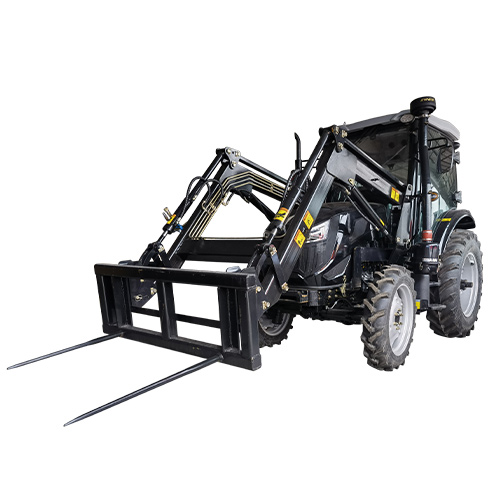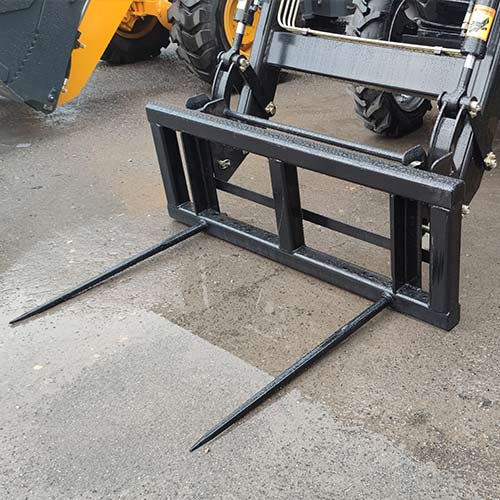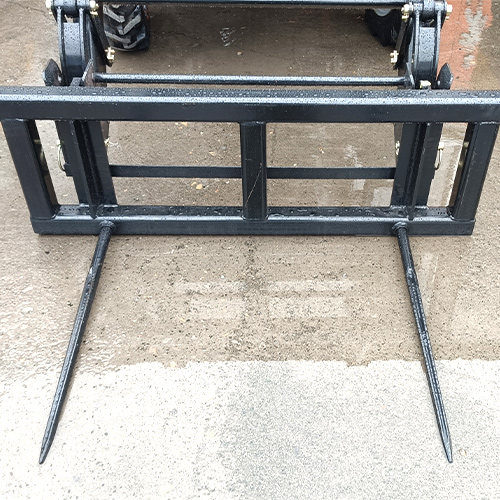Introduction

When it comes to efficiently handling hay on the farm, having the right equipment is crucial. One such essential tool is the hay fork for tractor. This guide aims to provide a comprehensive overview of the key factors to consider when choosing the best hay fork for your tractor. Whether you are a seasoned farmer or new to the agricultural industry, this guide will help you make an informed decision that suits your specific needs.
Key Features to Look for in a Hay Fork for Tractor
Before diving into the specifics of different hay forks available in the market, it is essential to understand the key features that you should look for in a hay fork for your tractor. These features will ensure that you can efficiently and safely handle hay on your farm.
Durability: The hay fork should be made of high-quality materials that can withstand the rigors of daily use on the farm.
Compatibility: Ensure that the hay fork is compatible with your tractor’s specifications to avoid any compatibility issues during operation.
Capacity: Consider the capacity of the hay fork to ensure that it can handle the amount of hay you typically work with on your farm.
Adjustability: Look for a hay fork that offers adjustability in terms of height and width to accommodate different sizes of hay bales.
Ease of Use: The hay fork should be easy to attach and detach from the tractor, making the handling process efficient and hassle-free.
Comparison of Top Hay Forks for Tractor

To help you make an informed decision, here is a comparison table of some of the top hay forks available in the market:
| Hay Fork Model | Durability | Compatibility | Adjustability | Ease of Use |
|---|---|---|---|---|
| ForkMaster 5000 | High | Compatible with most tractors | Adjustable height and width | Easy to attach/detach |
| Assemble Hay Fork | Premium | Compatible with most tractors | Adjustable height and width | Easy to install and use |
| HayPro Deluxe | Premium | Specifically designed for John Deere tractors | Height adjustable only | Quick attachment system |
| FarmTuff MegaFork | Durable | Compatible with various tractor brands | Adjustable width | User-friendly design |
Conclusion
Choosing the best hay fork for your tractor is a decision that should not be taken lightly. By considering key features such as durability, compatibility, capacity, adjustability, and ease of use, you can select a hay fork that meets your specific requirements. Refer to the comparison table and FAQs provided in this guide to make an informed choice that will enhance the efficiency of your hay handling operations on the farm.
In conclusion, investing in a high-quality hay fork for your tractor is a decision that will benefit you in the long run by simplifying and streamlining your hay handling processes. Choose wisely, and enjoy the convenience and efficiency that the right hay fork can bring to your farm operations.
FAQs
What factors should I consider when selecting a hay fork for tractor?
When choosing a hay fork for your tractor, several factors should be considered, including the lifting capacity of the fork, compatibility with your tractor’s front-end loader or three-point hitch, the type and size of hay bales you’ll be handling, and any additional features or attachments you may need for your specific farming operation.
What are the different types of hay forks available for tractors?
There are several types of hay forks available for tractors, including single-arm forks, double-arm forks, and spear-style forks. Single-arm forks are versatile and suitable for handling a variety of hay bale sizes, while double-arm forks offer increased stability and lifting capacity for larger or heavier bales. Spear-style forks are commonly used for handling round bales and provide excellent penetration and stability during transport.
How do I determine the lifting capacity of a hay fork attachment for my tractor?
The lifting capacity of a hay fork attachment for a tractor is typically specified by the manufacturer and can be determined by factors such as the maximum weight or size of hay bales the fork can safely lift and transport. It’s important to choose a hay fork attachment with a lifting capacity that matches or exceeds the weight of the heaviest bales you’ll be handling to ensure safe and efficient operation.
Are there any safety considerations I should keep in mind when using a hay fork attachment with my tractor?
Safety should always be a top priority when using any type of machinery or equipment on the farm. When using a hay fork attachment with your tractor, it’s important to follow recommended loading and lifting capacities, ensure that hay bales are securely positioned and balanced on the fork attachment during transport, and practice safe operating procedures such as engaging safety locks and lowering the fork to the ground before dismounting the tractor.
How can I maintain and prolong the lifespan of my hay fork attachment for my tractor?
Proper maintenance is essential for prolonging the lifespan of your hay fork attachment and ensuring reliable performance. This may include regular inspection for signs of wear or damage, lubrication of moving parts, tightening of bolts and fasteners, and storing the attachment in a dry, protected environment when not in use. Following manufacturer guidelines for maintenance and operation can help ensure that your hay fork attachment remains in optimal condition for years to come.


